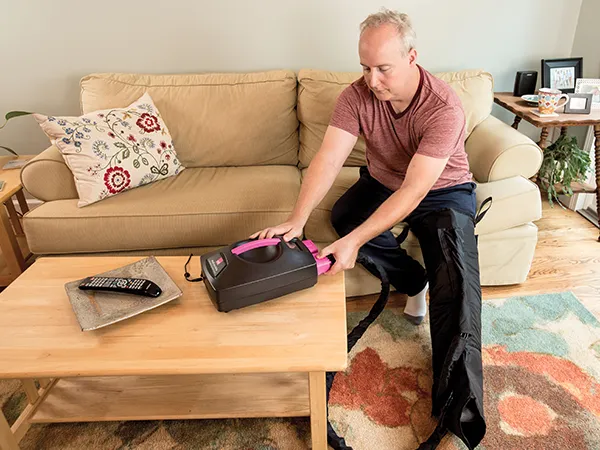What is Chronic Venous Insufficiency?
Chronic venous insufficiency (CVI) is a condition that occurs when the venous wall and/or valves in the leg veins are not working effectively, making it difficult for blood to return to the heart from the legs. CVI causes blood to “pool” or collect in these veins, and this pooling is called stasis.

What Causes Chronic Venous Insufficiency?
Veins return blood to the heart from all the body’s organs. To reach the heart, the blood needs to flow upward from the veins in the legs. Calf muscles and the muscles in the feet need to contract with each step to squeeze the veins and push the blood upward. To keep the blood flowing up, and not back down, the veins contain one-way valves.
Chronic venous insufficiency occurs when these valves become damaged, allowing the blood to leak backward. Valve damage may occur as the result of aging, extended sitting or standing or a combination of aging and reduced mobility. When the veins and valves are weakened to the point where it is difficult for the blood to flow up to the heart, blood pressure in the veins stays elevated for long periods of time, leading to CVI.
What are the symptoms of CVI?
The seriousness of CVI, along with the complexities of treatment, increase as the disease progresses. That’s why it is very important to see your doctor if you have any of the symptoms of CVI. The problem will not go away if you wait, and the earlier it is diagnosed and treated, the better your chances of preventing serious complications. Symptoms include:
- Swelling in the lower legs and ankles, especially after extended periods of standing.
- Aching or tiredness in the legs.
- New varicose veins.
- Leathery-looking skin on the legs.
- Flaking or itching skin on the legs or feet.
- Stasis ulcers (or venous stasis ulcers).
If CVI is not treated, the pressure and swelling increase until the tiniest blood vessels in the legs (capillaries) burst. When this happens, the overlying skin takes on a reddish-brown color and is very sensitive to being broken if bumped or scratched.
At the least, burst capillaries can cause local tissue inflammation and internal tissue damage. At worst, this leads to ulcers, open sores on the skin surface. These venous stasis ulcers can be difficult to heal and can become infected. When the infection is not controlled, it can spread to surrounding tissue, a condition known as cellulitis.
CVI is often associated with varicose veins, which are twisted, enlarged veins close to the surface of the skin. They can occur almost anywhere, but most commonly occur in the legs.
